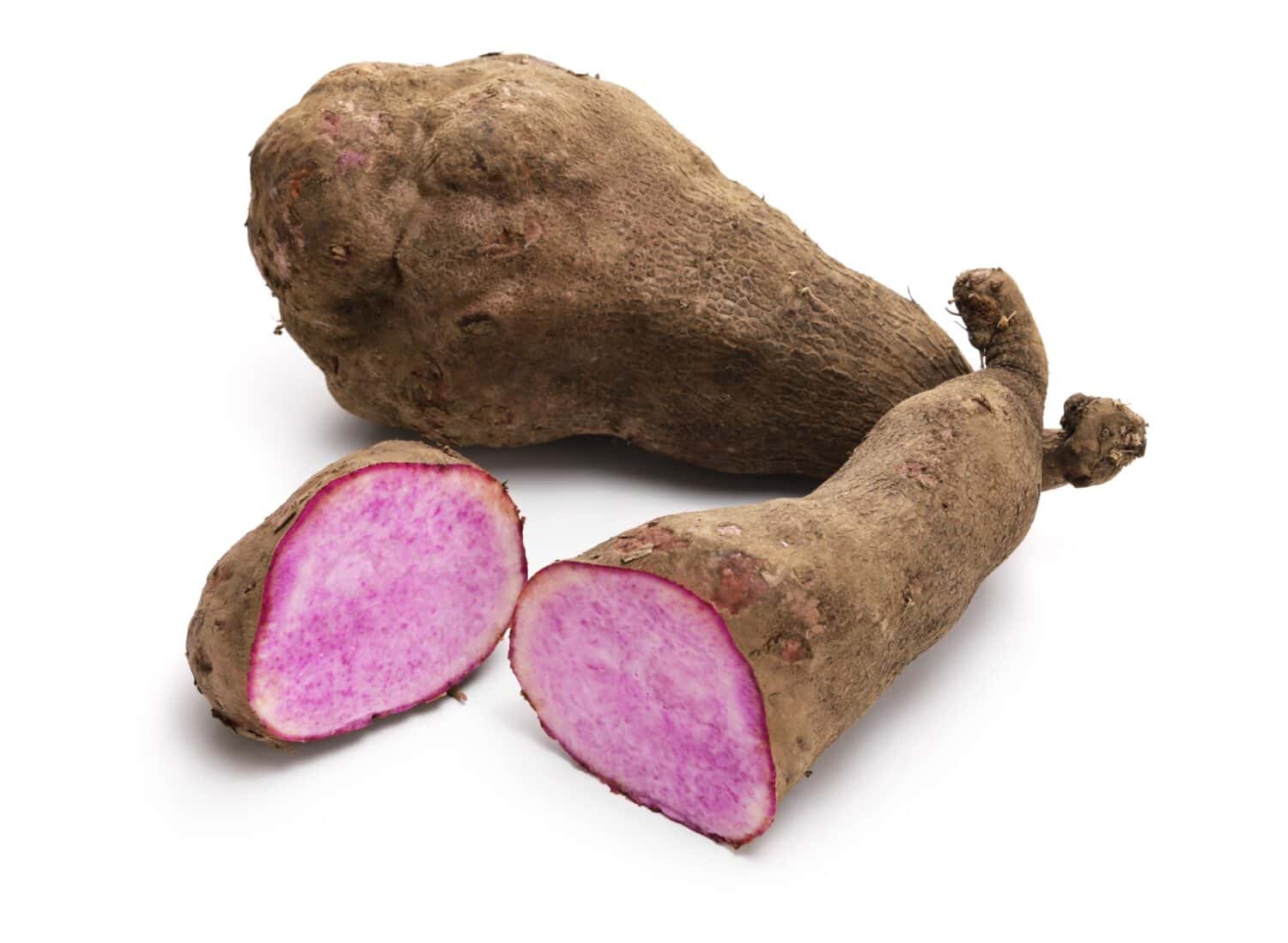Have you ever asked yourself what exactly is the difference between a yam and a sweet potato? If so, you're in the right place. Yams and sweet potatoes may seem interchangeable, but they are pretty different. For starters, yams and sweet potatoes have different textures, colors, flavors, and sizes. Additionally, one of these vegetables can be toxic if eaten raw!
Let's get down to the nitty gritty and discover the differences between yams and sweet potatoes.
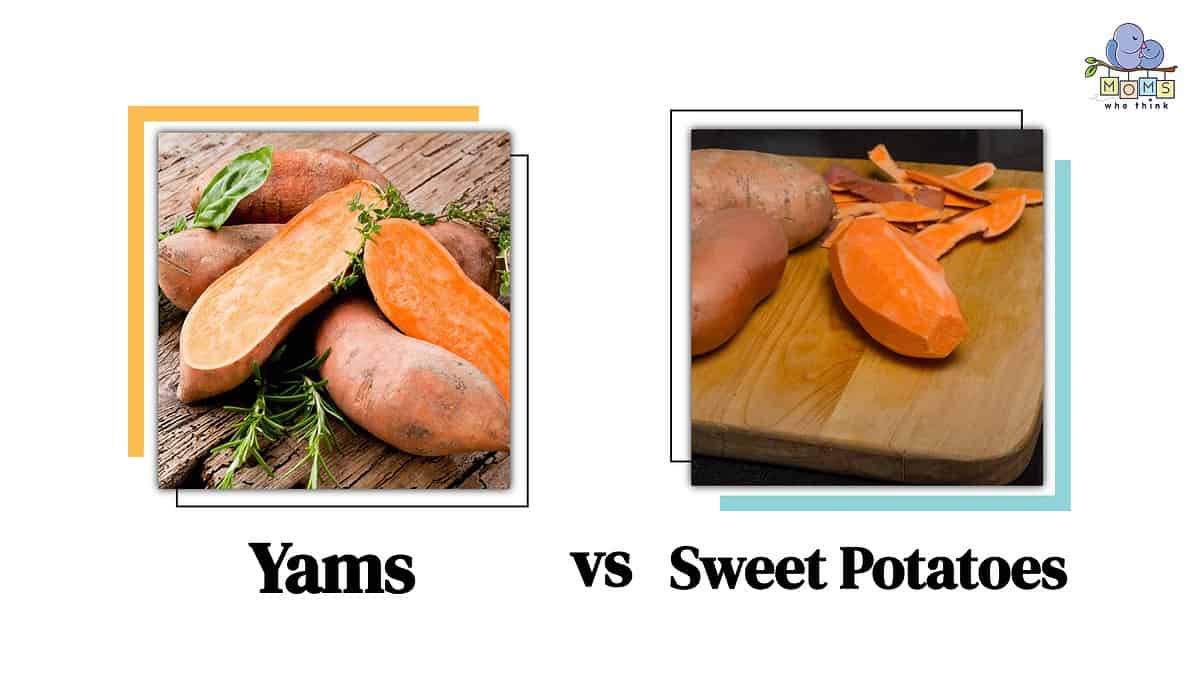
Are Yams and Sweet Potatoes Interchangeable?
If you live in the United States, chances are you have heard the terms yams and sweet potatoes used interchangeably. This is understandable; they are similar in appearance. However, they have very telling differences.
Therefore, it is not possible to interchange the two.
Full Nutritional Comparison Between Yam and Sweet Potatoes
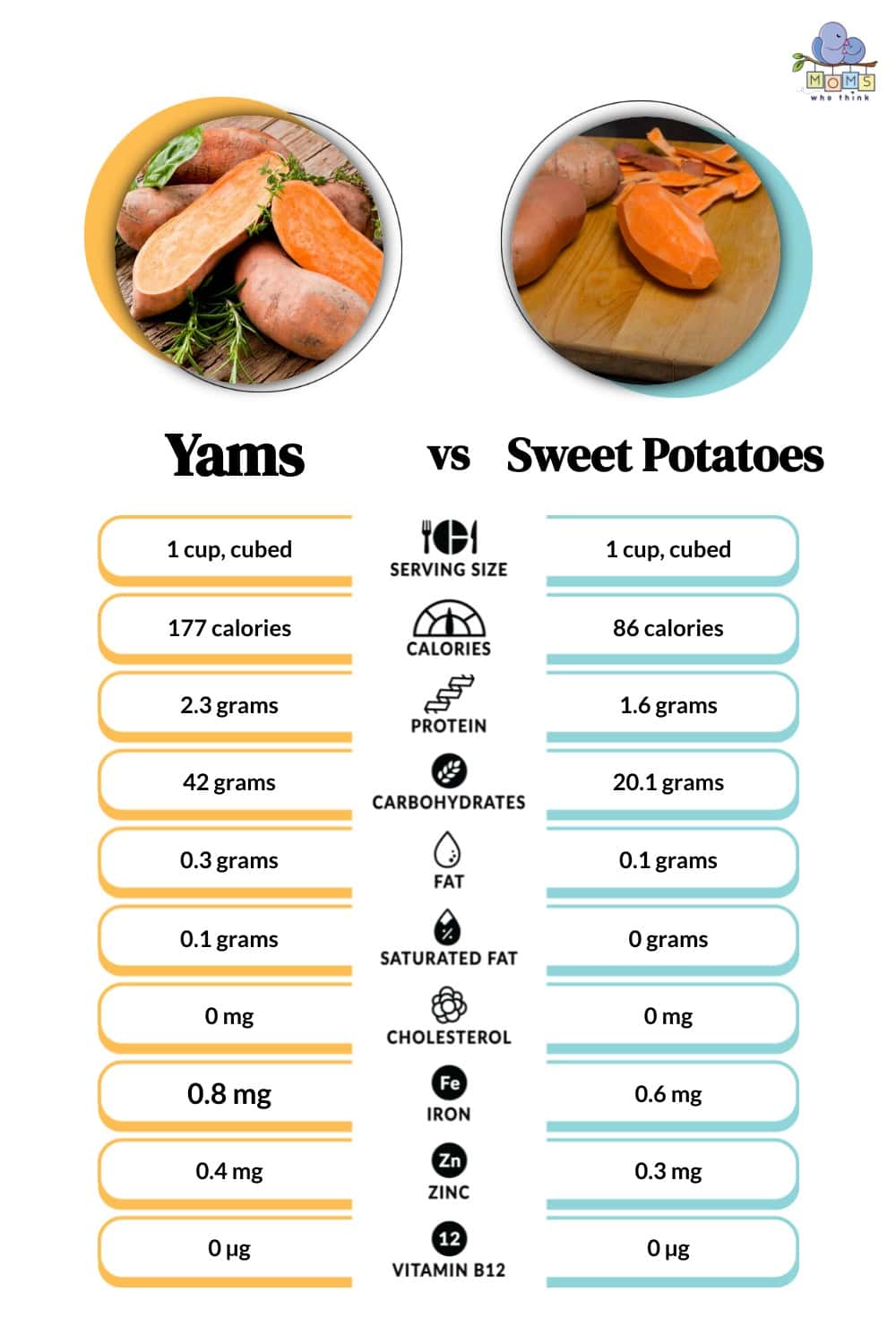
What is the Main Difference Between Yam and Sweet Potatoes?
There are many main differences between the two. In this article, we will talk about seven main factors that make yams and sweet potatoes different from one another.
The Texture is Different
Both yams and sweet potatoes are root vegetables. However, the textures are quite different between the two.
Yams have skin similar to bark because it is rough and dry. Yams are also quite starchy.
Sweet potato texture will vary between the different types. Dark sweet potatoes have thick skin with a sweet and soft texture. Lighter sweet potatoes tend to be dryer and firmer in texture. However, no matter what sweet potato you choose, the texture will still not be as rough and dry as a yam.
Size is a BIG DEAL
Another main difference between yams and sweet potatoes is their sizes.
Sweet potatoes can be small, medium, or large. While they vary in size, typical sweet potatoes are between three ounces and a little over eight ounces.
Yams, on the other hand, can grow to be relatively larger. In fact, one of the most giant recorded yams dates back to 1999 and weighed 130 pounds!
However, on average, tuber yams can range around six pounds, yet they can still reach up to 55 pounds. Talk about a size difference!
The Outer Skin Are Different Colors
Sweet potatoes are classically recognizable by their telling skin color. The outer skin of a sweet potato is usually copper in appearance, although the color can vary from white, purple, brown, or red.
On the other hand, Yams have a brown outer skin that can also appear gray.
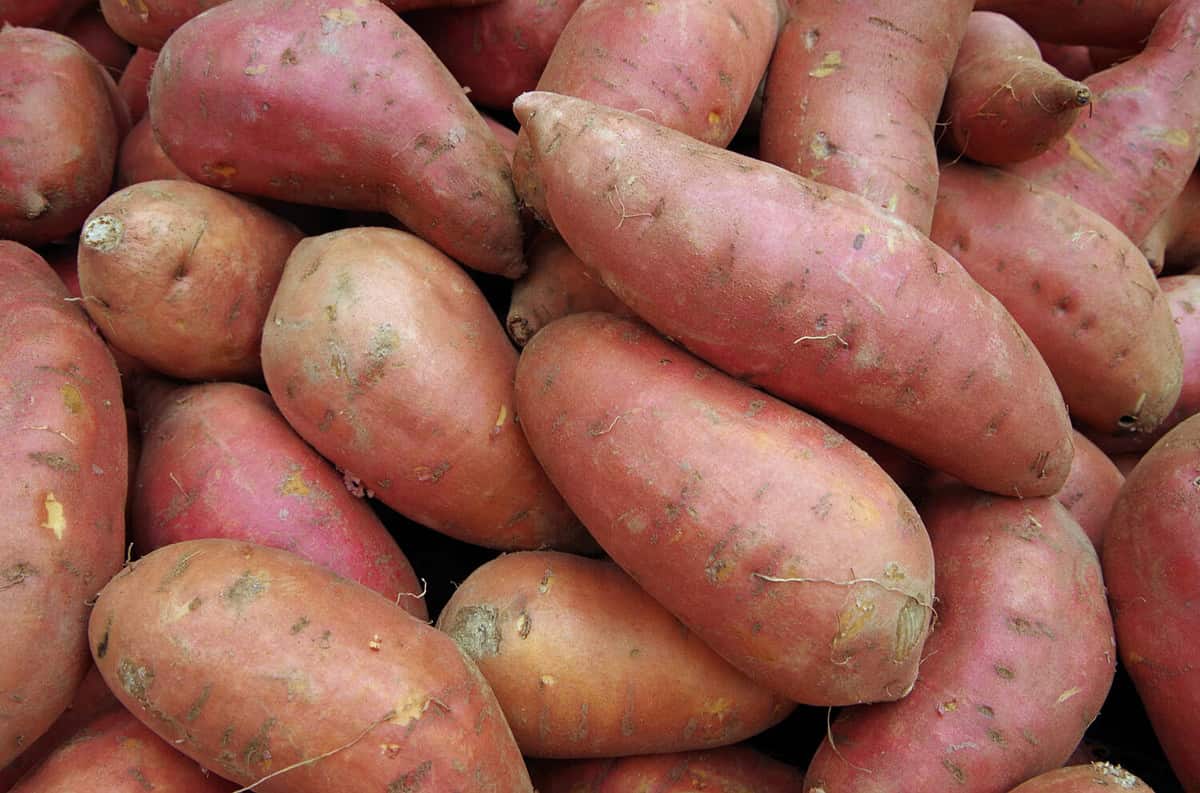
Sweet potatoes are recognizable by their brownish-red outer skin and yellowish or orange middle.
©Paul Pellegrino/Shutterstock.com
Availability Vary Between the Two
Another difference between yams and sweet potatoes is where each one grows. Sweet potatoes grow in the United States and are readily available all over America. They grow best in warm climates that have plenty of water. Therefore, they also grow in South India, Africa, and China.
Yams, however, are not readily available in the United States. Yams primarily grow in Africa and Asia. While you can find them in America, they are less common than sweet potatoes because they have to be imported.
Flavor Varieties are an Important Difference
An essential difference between yams and sweet potatoes is in the flavors. Sweet potatoes have a sweet flavor that is mild yet noticeable. While the flavor is still starchy, the sweet taste makes them quite enjoyable. Sweet potatoes are great, either boiled or baked.
Yams are quite starchy. The flavor is not sweet. Instead, yams typically carry an earthy and dense flavor.
One of Them is Toxic When Eaten Raw
The common consensus is that you can eat raw sweet potatoes without the fear of toxicity. In fact, raw sweet potatoes can be very beneficial with nutrients and support your immune health.
Yams, on the other hand, can be toxic when eaten raw. The outer skin may carry specific toxic plant proteins. Therefore, the safest way to eat a yam is to peel and boil until fully cooked.
What Color is the Inside?
Many sweet potatoes have a telling orange inside. However, the inside can also be lighter white or even purple. The inside of a sweet potato softens the longer it cooks and has a sweet, mild flavor that maintains moisture well.
Conversely, the inside of a yam is typically white. The inside is also quite starchy in comparison to sweet potatoes. Yams can also have a different color on the inside depending on the variety of the yam. Some are yellow, purple, or red on the inside.
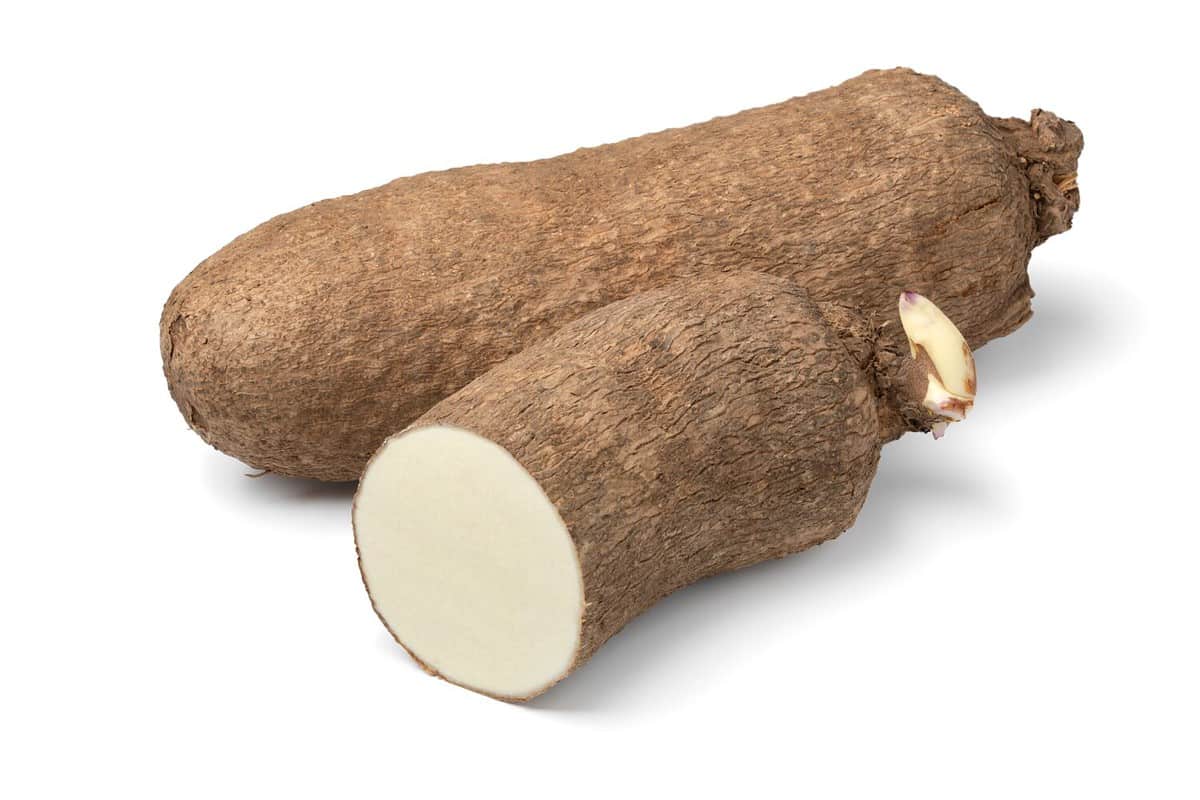
Yams have a rough barky texture on their outer skin.
©Picture Partners/Shutterstock.com
Yams and Sweet Potatoes Truly Are Different From One Another
While yams and sweet potatoes are often considered interchangeable, they actually aren't. There are many telling differences between the two. Sweet potatoes are smaller, have a telling appearance, and have a sweet, mild flavor. A yam can grow quite large, is very starchy, and can be toxic if eaten raw.
Whether you enjoy the starchy flavor of a yam or prefer the sweet taste of a sweet potato will depend on your personal preference. Both of these root vegetables have unique perks and interesting characteristics that set them apart from one another!
The image featured at the top of this post is ©bonchan/Shutterstock.com
